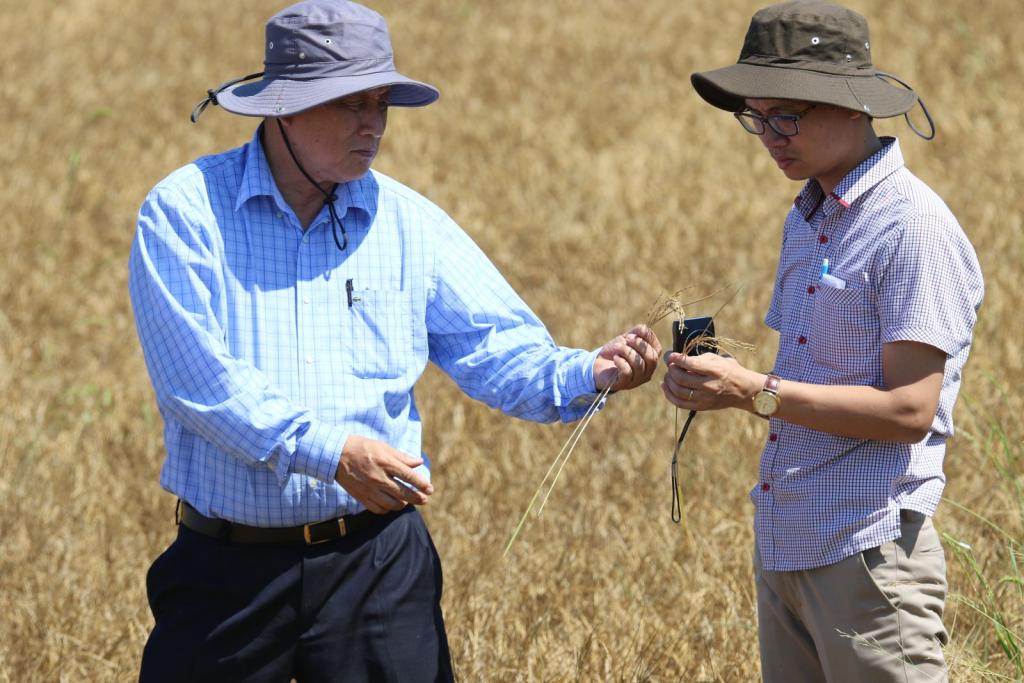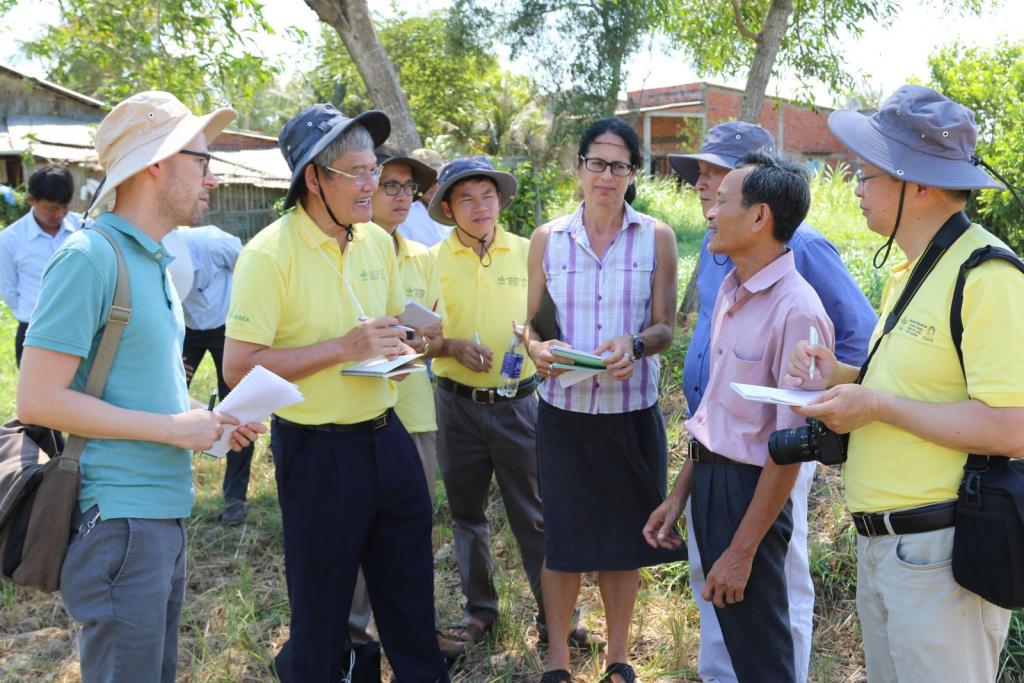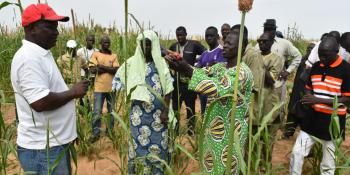Research centers respond to drought and salinity intrusion in Vietnam

CGIAR centres and partners assess the impacts of drought and salinity intrusion in Vietnam to support climate change adaptation.
Global warming has forced us to a point where we hear of people cooking eggs outside on the sidewalk and of coral reef bleaching (the calcification of corals due to ocean warming). Not only are the glaciers melting, but also the asphalt roads in India.
It does not help that the El Niño Southern Oscillation (ENSO) phenomenon in 2015 was the second severest since 1965.
Recently, Vietnam has been hit by severe drought episodes and salinity intrusion, which both put much pressure on their agricultural production. Hence, the Vietnamese government and the United Nations Development Program convened donors, international organizations and other partners to discuss joint efforts in addressng and responding to these climate challenges that have been affecting Vietnam’s Central Highlands and the Mekong Delta Region (MDR).
Assessing the situation
On March 15, 2016, H.E. Cao Duc Phat, Vietnam’s Minister of Agriculture and Rural Development, and Ms. Pratibha Mehta, UN Resident Coordinator in Vietnam, called for a meeting to report on the recent rapid needs assessments in the selected provinces.
According to the Ministry of Agricultural and Rural Development (MARD) of Vietnam, 96,700 ha of crops have been damaged by drought conditions, so far in the Central Highlands region of Vietnam. In the MDR, around 263,600 ha have been affected by drought and salinity intrusion. Other major challenges include shortage of fresh water, increase in climate-related diseases and less food, especially for the children and women.
The effects extend from agricultural production to livelihoods, food security and health of a large part of the Vietnamese population.
“The current estimate is about two million people are adversely affected, with about half a million classified as children,” says Dr. Leocadio Sebastian, the regional program leader of CGIAR Research Program on Climate Change, Agriculture and Food Security in Southeast Asia (CCAFS SEA).
Dr. Bui Chi Buu (VAAS) and Mr. Ngo Duc Minh (IRRI-CCAFS), members of the Mekong Delta assessment team looking at the drought damaged rice field in Tra Vinh province, southern Vietnam. The joint assessment is a response to the government's call for support from the international community. Photo: Leocadio Sebastian (CCAFS)
Response of CGIAR centers
A call was put out for immediate, medium- and long-term support from the international community in addressing the impacts of climate change. CCAFS SEA arranged a joint field assessment of the Central Highlands and Mekong Delta regions with national partners and CGIAR centers operating in Vietnam. The aim was for researchers/experts to get first hand observations and assessment of the on-site drought and salinity crisis in the 2 regions and recommend to MARD appropriate climate-smart agriculture (CSA) options.
The Central Highland assessment team was composed of representatives from the International Rice Research Institute (IRRI), International Water Management Institute (IWMI), World Agroforestry Centre (ICRAF), International Center for Tropical Agriculture (CIAT), International Livestock Research Institute (ILRI) and the Western Highlands Agriculture and Forestry Science Institute (WASI). From 18-22 April 2016 the team visited the Kon Tum, Gia Lai, Dak Lak provinces.
On the other hand, the Mekong Delta field assessment was conducted from 25-28 April 2016 in the Ben Tre, Tra Vinh and Kien Giang provinces. The assessment team consisted of representatives from IRRI, IWMI, Bioversity, ICRAF, WorldFish, Institute of Agricultural Sciences for Southern Vietnam-Vietnam Academy of Agricultural Sciences (IAS-VAAS), and Vietnam Institute of Fisheries and Economic Planning (VIFEP).
Dr. Sebastian says, “The strength that the CGIAR could contribute is in: downscaling some of the global data and analyses to Vietnam scenarios and forecasts for their planning; recommending CSA options for integration in current and future donor or development interventions; and recommending research for development for future preparedness.”
The Mekong Delta Assessment team discussing with the local extension staff about the salinity intrusion affected areas in Ben Tre province, southern Vietnam. The team will recommend CSA practices that could be done in the communities to alleviate the impacts of drought and salinity intrusion. Photo: Leocadio Sebastian (CCAFS)
Climate-smart options to address drought and salinity problems
Based on end-of-trip debriefing of the teams, some of the recommendations include:
- Strengthening drought and salinity forecasting down to the provincial and district levels
- Development of salinity and drought hazard maps at the provincial and district levels
- Inter-agency coordinated ICT-based real-time monitoring of salinity intrusion
- Conduct of risks analysis
- Deployment of salt and drought tolerant crops
- Promotion of diversification options for smallholder agriculture and aquaculture
- Enhanced ground and surface water management
- Improvement of water shed management (in Central Highlands)
The two teams are currently working on location specific and integrated CSA options for the two regions based on the field assessment results. The assessment teams are also identifying priority CSA options that could be employed to alleviate the effects of the drought, and also possible research actions that could be pursued in the future.
Read more:
Related stories from CCAFS:
- Flipping the issue: agriculture contributes to climate change?
- New guidance for climate-smart agriculture in Southeast Asia
- Making the UNFCCC work for agriculture in Asia
In the news:
- Mekong megadrought erodes food security | Science Magazine
- Drought exacts toll on crops in region | The Straits Times
- Development partners suggest drought response measures | VietNamPlus
- Scientists help Vietnam’s rice farmers adapt to climate change, amid major drought | IRIN
Amy Cruz is the junior communications specialist for the World Agroforestry Centre Philippines. She is also a communication consultant with the CCAFS SEA program.





